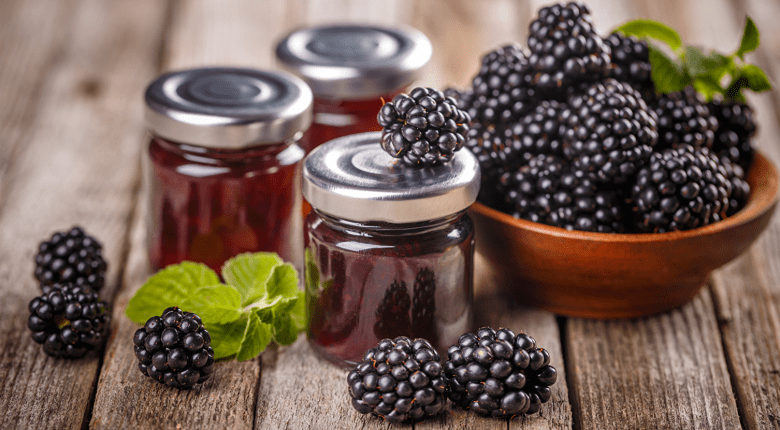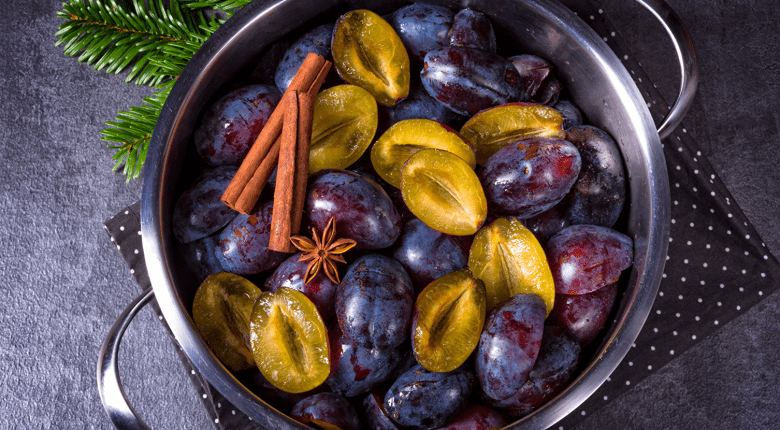Jam comes in many different forms which is also precisely the case when it comes to preserving the sweet spread. Many of us don’t realise that you can actually freeze jam. Read on to discover some tips for making and freezing jam as a form of preservation.
It’s all about the sugar. Or is it?
So, what is it that actually preserves jam? For those of a certain generation, the universal response to this question was always “sugar”. Fruit and sugar were mixed together happily in equal parts. While this certainly gave you something tasty to spread on your toast, it was a relatively unhealthy breakfast.
The emergence of ‘jam sugar’ allowed the proportion of sugar to be significantly reduced. Sugar is then mostly added in ratios of 1:2 or even 1:3. One significant disadvantage of this modern ‘helping hand’ in the kitchen is the palm oil it often contains, which is intended to reduce the build-up of foam when boiling – and the preservative. The latter ensures that the preserve will last for several months, or even years, with very little sugar.

A move towards natural ingredients
Those coping with intolerances, or who would like to do without preservatives generally but still reduce the amount of sugar, must be prepared to compromise on shelf life. Natural and less sweet varieties of jam have significantly shorter shelf lives, even when stored at cellar temperatures. This can be remedied with the freezer. The low temperatures of -18 °C block the enzymatic reactions or cause them to occur more slowly. This means the sweet fruit spread can be enjoyed for a long time.
Freezing improves the appearance and taste
However, there is another advantage to freezing jam. Strawberry jam, in particular, tends to lose its colour when kept in the cellar. This is due to the light which destroys the natural pigment of the fruit. The result is that the preserves may turn brown or grey, which no longer looks so appetising. However, if you add a couple of squirts lemon juice during the preparation, and then freeze them, the red of the strawberry jam will remain even after a year.
The frozen variant also scores well in terms of the all-important flavour. Place jam in the freezer compartment shortly after it has been boiled down and, even months later, it will still taste like it has been freshly made.
How jam is frozen
Jam should not be frozen until it has completely cooled. Preserving jars are ideal for this because they are extremely heat resistant and are better able to withstand stresses. Generally, however, any jar can be used. Just to be on the safe side, the jar should only be filled to around 7/8 full as in some circumstances the liquid preserve may expand slightly in the freezing process. The largest possible diameter and vertical storage are also recommended.
Alternatively, if you have used up your supply of glass containers, you can also place the preserve in the freezer in plastic boxes suitable for freezing. Ice cube trays are ideal, for example, for improving portioning. Ice cube moulds with a lid are perfect.
For the best results, take your homemade jam out of the freezer the night before you eat it, allow it to slowly thaw and enjoy it the following morning.

Jam is made by boiling down fruit and adding sugar
Tips for making healthy jam
Here are some general tips for making healthy jam:
- Preserving sugar in place of the standard sugar reduces the build-up of froth when boiling and, due to the larger sugar crystals, also reduces the risk of burning.
- A little lemon juice helps the setting process. In particular, fruits with small amounts of pectin such as strawberries cherries or rhubarb must be boiled for longer until they set. The acid in the lemon juice helps the pectin to set and therefore reduces the boiling time.
- To test whether the jam has already set, place a spoonful of jam on a cold plate. If it sets on the plate, the preserve is ready.
- However, if it is still not setting successfully, agar-agar obtained from algae can be added. A teaspoon of the plant-based thickener is all you need to set half a kg of fruit. The setting test can’t be used with agar-agar because the jam will not set in this case until it is cold. Another natural option is the addition of apple pectin.
- After filling with the hot jam, turn the containers upside down for 10 minutes. This not only allows the oxygen to escape but will also sterilise the area between the preserve and the lid.
Do you know any other tips or recipes for making healthy jam? If so, please share them with us on Facebook, Twitter, Instagram or Pinterest. We’d love to hear from you!